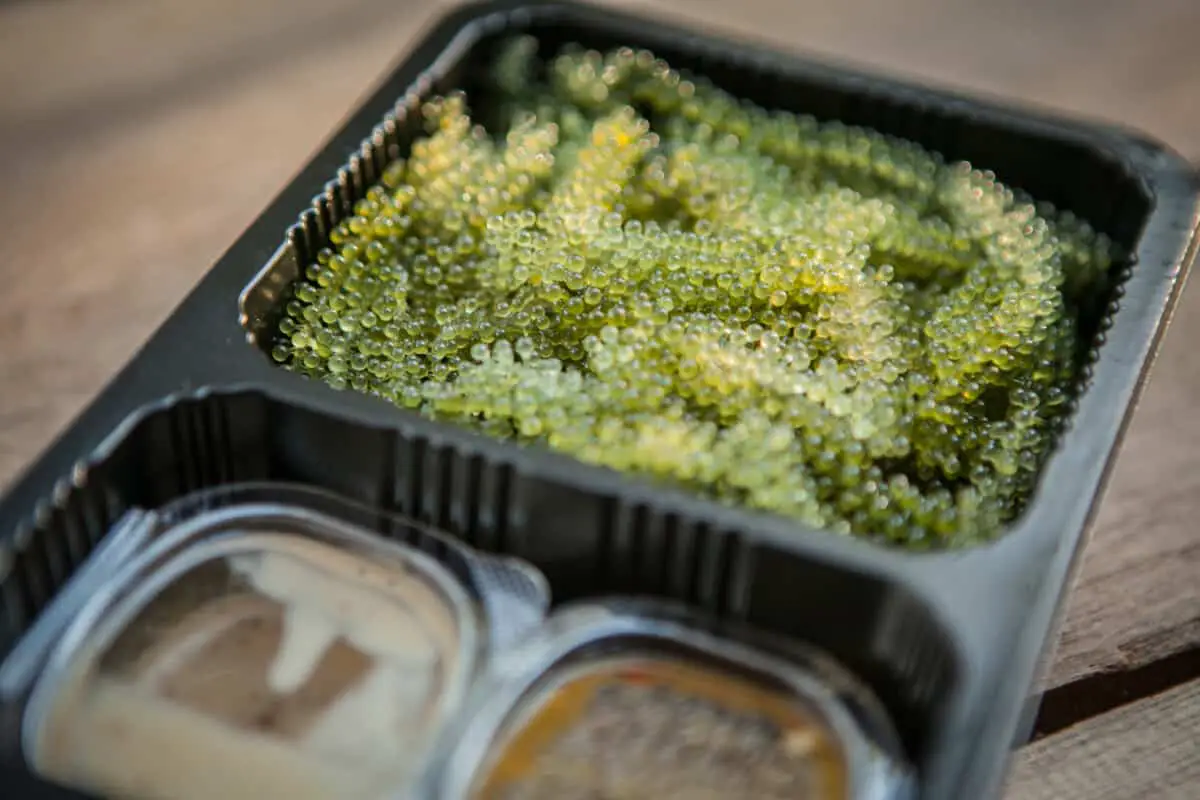Japan’s sea grapes are a type of seaweed that resembles fish roe (eggs) and is considered a very healthy and delicious addition to a meal.
The Japanese word “umibudo” literally translates into English as “sea grapes” and although this is not the technical name for this plant, it is much easier to remember than its scientific name. The plant gets its name from the little round balls attached to the stem of the plant.
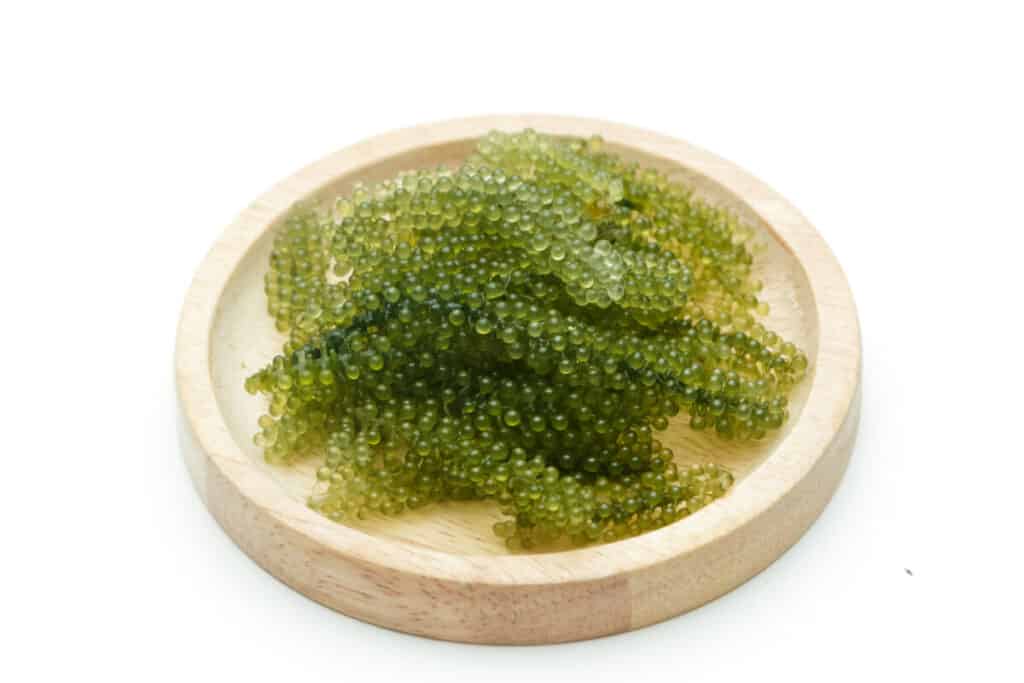
Despite its name this plant is not actually a bunch of grapes growing in the sea, but rather it is a form of seaweed that simply resembles miniature grapes. However, it should not be confused with the seagrape tree found in the Caribbean.
Although you may not have seen sea grapes outside of Japan they are still widely known for being a delicacy and are not only a great addition to many Japanese meals, but they also carry many health benefits.
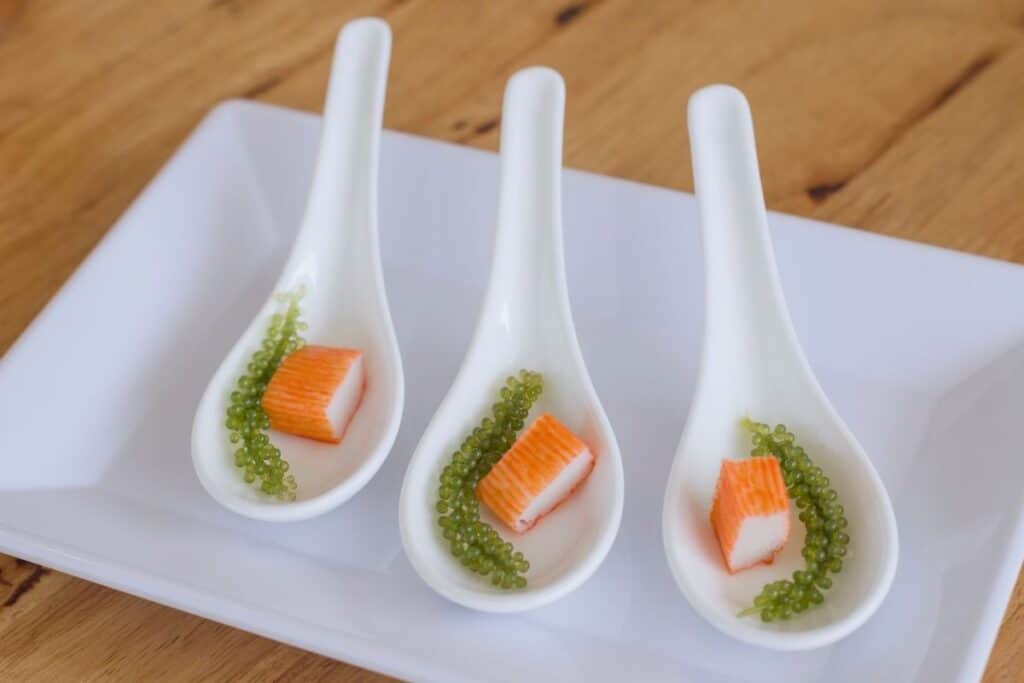
Here we do a deeper exploration about Japanese sea grapes from where to find them to how to prepare them and their health benefits.
Where can I find Japanese sea grapes?
In nature
Japanese sea grapes are mostly harvested in the tropical southwest islands of Japan. Seagrapes are typically found in abundance here as they need mild water, shallow sea floors, and sand in order to be able to grow.
The sea grapes require a water temperature of around 25 degrees celsius to grow and this is exactly the average temperature of the water around Okinawa.
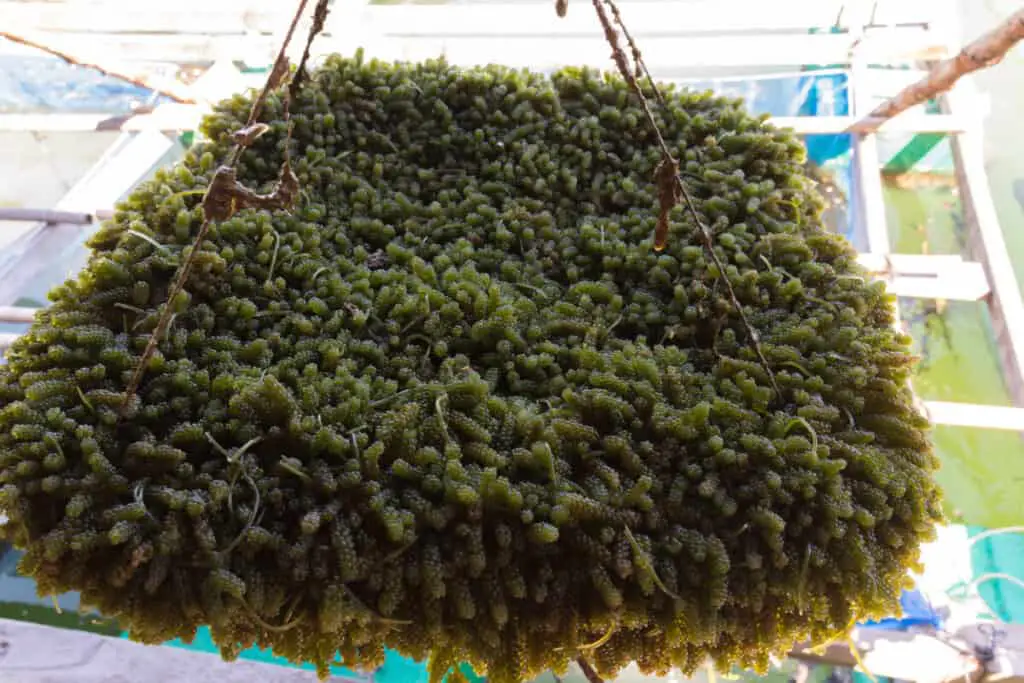
Due to its growing popularity, sea grapes, although traditionally harvested from the ocean, are now farmed. This is to help control the number of sea grapes in the natural habitat and to stop overharvesting, which was quickly becoming a problem.
Buying seagrapes in Japan
If you’re looking to find sea grapes to eat then the chances are that you are not going scavenging in the ocean near Okinawa. Instead, you are in luck if you live in mainland Japan.
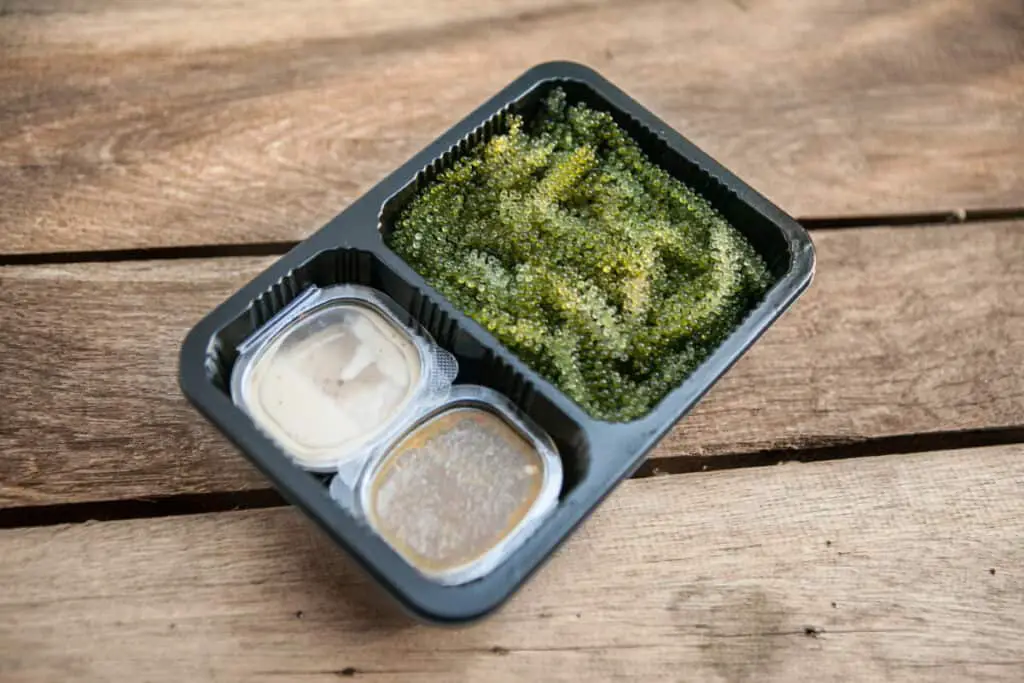
Japanese sea grapes have become so popular over the years that they can now be found in most Japanese supermarkets. Izakayas (Japan pubs) commonly serve seagrapes as a topping on many traditional Japanese dishes.
At many grocery stores across Japan, you will usually find the sea grapes packaged as a dehydrated snack in brine. The reason why you may struggle to find fresh sea grapes is that their shelf life is very short and so they will not transport well from remote Okinawa.
If you do buy the dehydrated sea grapes don’t despair as they can easily be rehydrated and return to their original state. To do this simply leave them in water for a few minutes.
Health benefits
Not only is Umibudo a delicious snack but it also has some great health benefits. Like many other forms of seaweed, umibudo is associated with a boost in skin health. This is thanks to the different minerals that can be found in the sea grapes such as magnesium, calcium, iron, and even iodine.
One of the best things about Japanese sea grapes for skin health and elasticity is that it contains hyaluronic acid and ingredient of many different skincare products that you may have even seen advertised. Hyaluronic acid helps to moisturize your skin and keep it silky smooth.
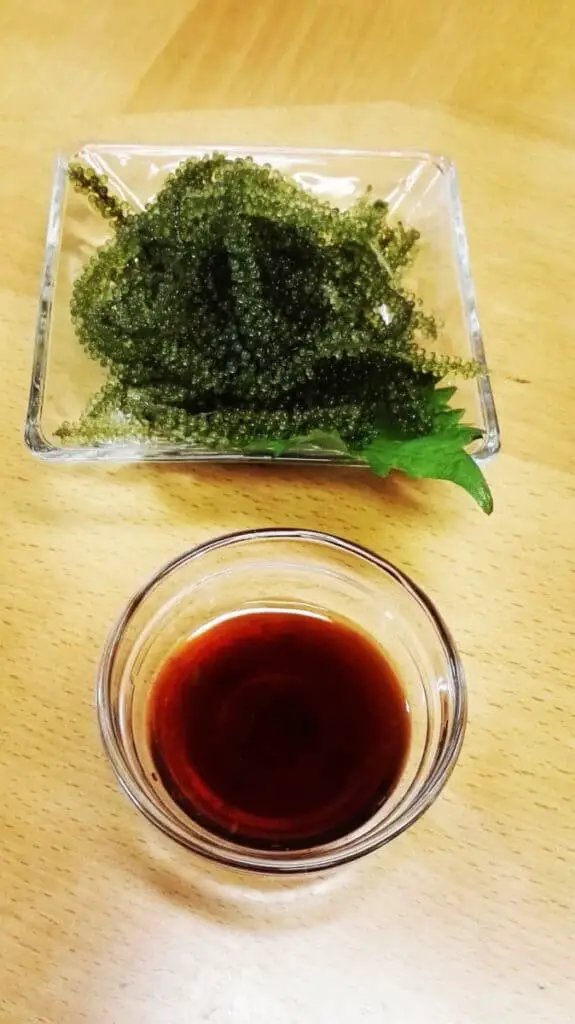
This fantastic ingredient also helps your skin to heal wounds. So, Japanese sea grapes are particularly popular among those in the beauty industry in Japan as they can make you radiant from the inside out. Not only this but the seaweed is also very low in calories, with only 4 calories per 100 grams.
How to eat Japanese sea grapes
So, know you know all of the benefits of eating umibudo and where to find it we will tell you how to prepare it and how it is most commonly enjoyed.
Layering sea grapes on top of a bowl of freshly cooked rice, known as umibudo don, is the simplest method to serve them. You may top the meal with a sauce called sanbaisu to add extra flavor. They can also be eaten raw with soy sauce or vinegar, soy sauce, and mirin mixture.
Many types of seaweed are often cooked before they are eaten, but with Japanese sea grapes, they are normally eaten raw. Although you could cook this seaweed you would risk losing a lot of the salty flavor that makes umibudo so delicious.
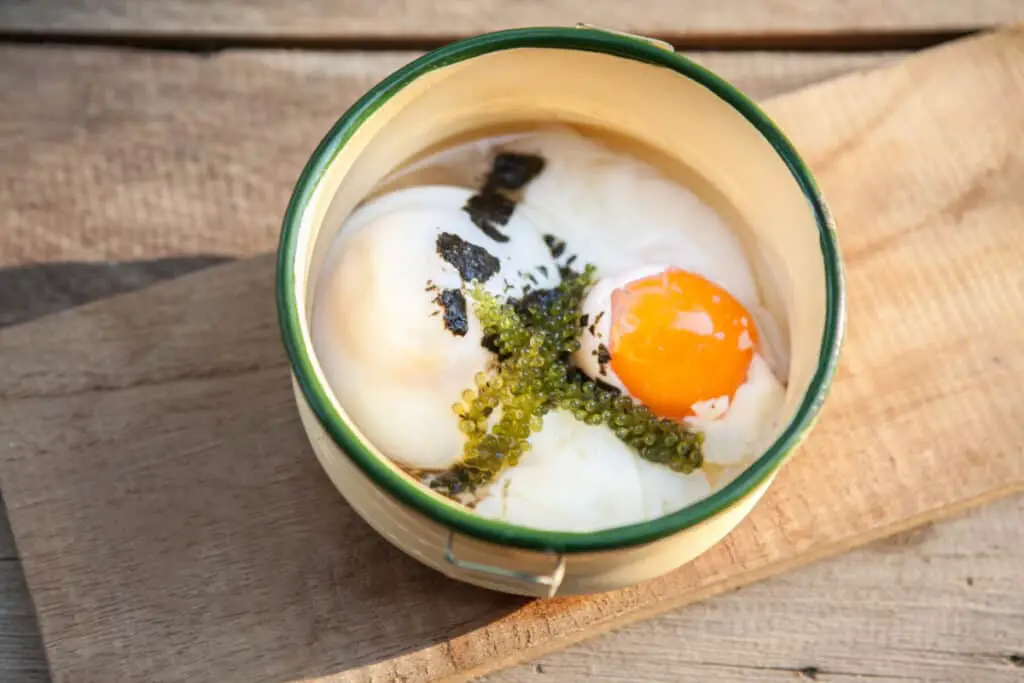
Perhaps more importantly, heating up Japanese sea grapes ruins the texture so although you will still receive all of the health benefits, you will ruin the culinary experience.
The seaweed is very versatile and can be added to almost any dish that you like. It is commonly eaten by itself among the Japanese it is dipped in a flavorful sauce, for example, ponzu sauce. It can also be eaten with sushi, and it also makes a great addition to most rice dishes.
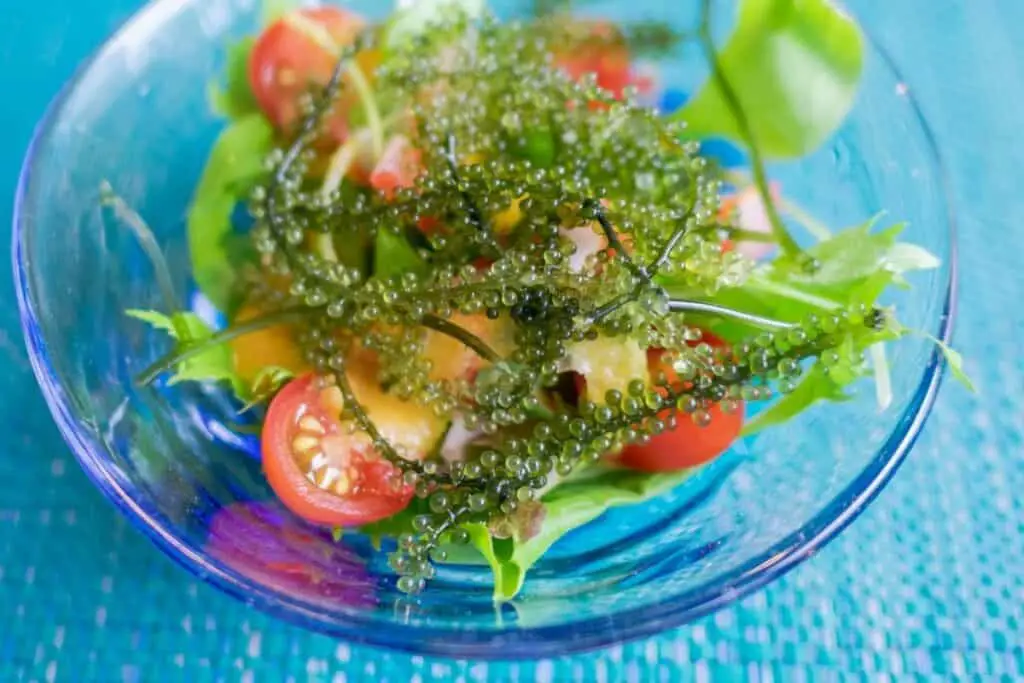
There are many different umibudo salad recipes available on the internet which are low-calorie and very healthy. One example of a sea grape salad that you can make at home includes tuna, lettuce, tomato, avocado, and any other vegetables that you want to add.
One of the great things about eating Japanese sea grapes is the experience as the little balls will burst as you bite them giving you a taste of the sea, making the experience fun.
Dehydrated seagrapes touted as a health superfood sold on Amazon
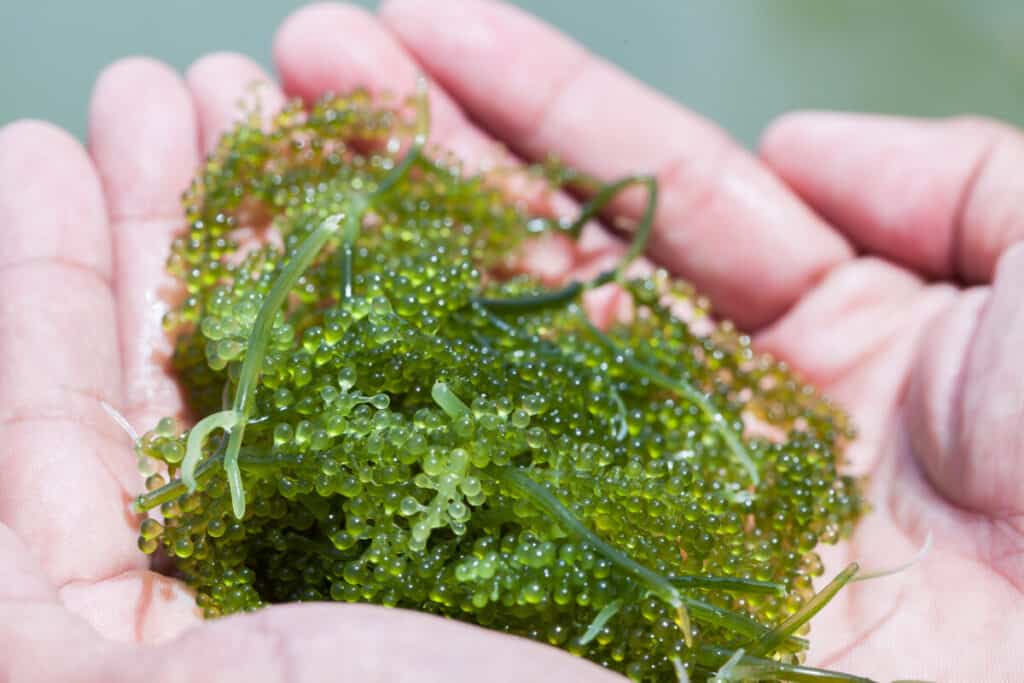
Conclusion
Japanese sea grapes are a far more unusual-looking form of seaweed that can be found in the more tropical southwest region of Japan, specifically around Okinawa.
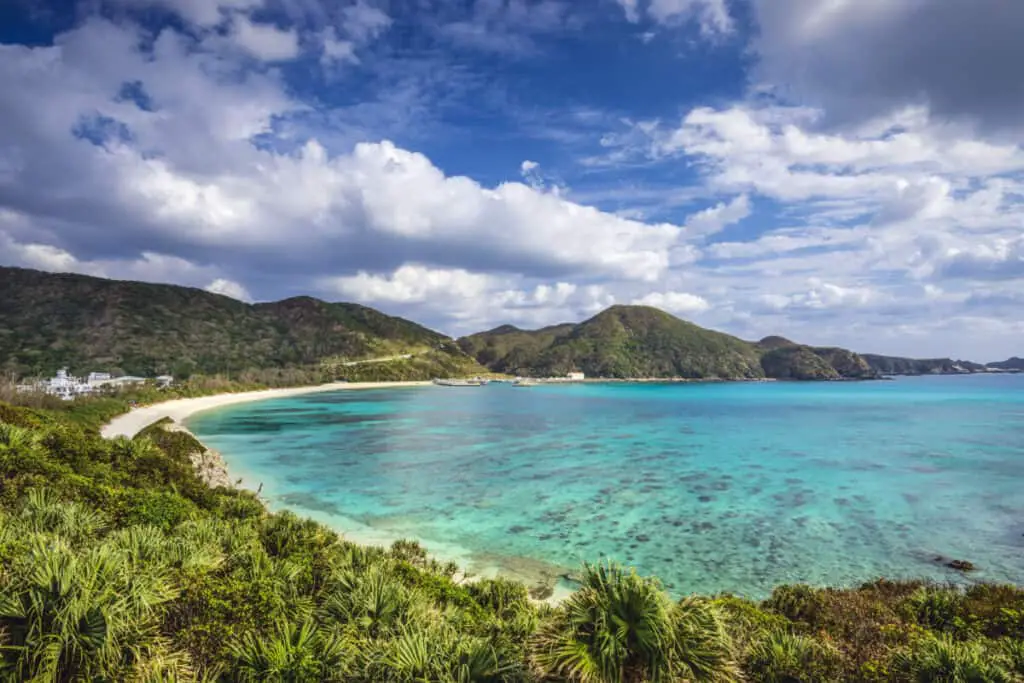
They get their name from the little balls that look much the same as caviar. They do not last particularly long out of the water so you will normally find them in a dehydrated form that requires rehydration before eating.
The strong salty taste of the umibudo makes it a great treat to eat by itself or to add to almost any other dish. The little bubbles make for a fun experience as they will burst in your mouth when you bite down on them, releasing all of the salty flavors of the seaweed.
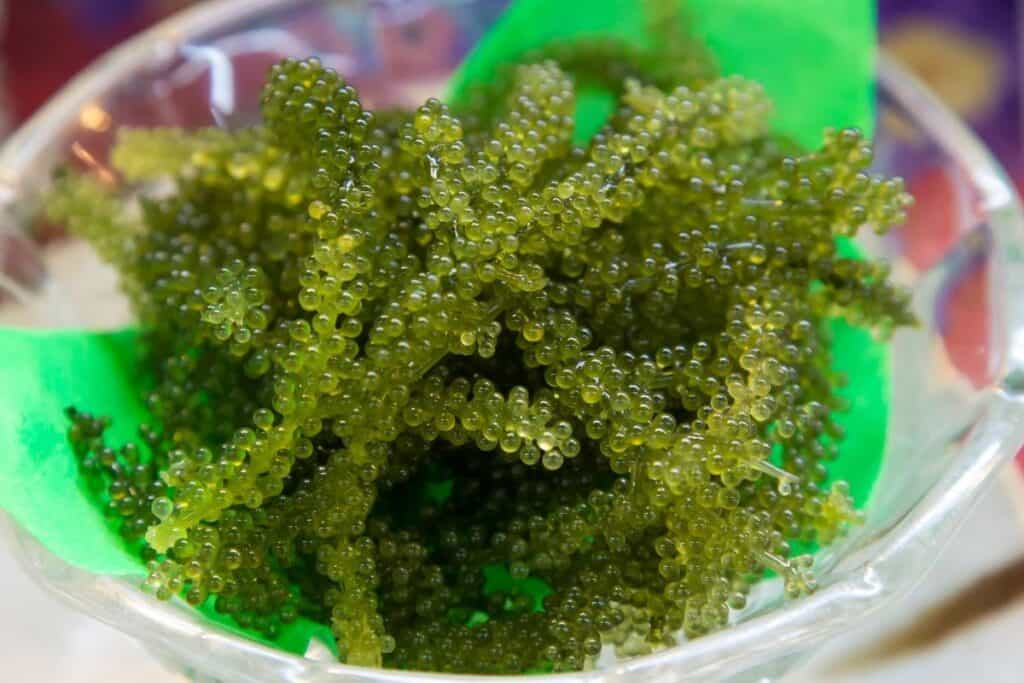
In addition, they are also very good for your skin and help to keep it fresh and healthy thanks to the numerous minerals that the sea grapes contain which help with skin hydration.
Umibudo is low in calories, rich in minerals, vitamins A and C, calcium, zinc, and iron, and is said to have healing properties. This green seaweed algae also contains a lot of omega-3 fatty acids and vegetable proteins in each calorie.
The sea grapes are only 4 calories for 100 grams, so you can get all of the benefits without the worry of any added calories.

